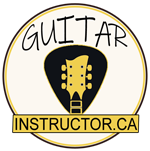
[ad_1]
The Ultimate Guide to Creating a Guitar Practice Routine
Learning to play the guitar is an exciting and rewarding journey, but it can also be a challenging one. Progressing from a beginner to an advanced player requires dedication, discipline, and a well-structured practice routine. In this guide, we will provide you with the ultimate tips and strategies for creating a guitar practice routine that will help you improve your skills and reach your musical goals.
1. Set Your Goals
Before you start designing your practice routine, it’s essential to define your goals as a guitar player. Are you looking to become a proficient rhythm guitarist? Do you want to master complex solos and improvisation? Are you aiming to write and compose your own music? Once you have a clear understanding of your objectives, you can tailor your practice routine to focus on the necessary skills and techniques.
2. Divide Your Practice Time
A well-rounded guitar practice routine should cover a variety of skills, including scales, chords, arpeggios, music theory, ear training, and repertoire. It’s important to allocate time for each of these areas in your practice schedule to ensure you are making balanced progress. The following is a suggested breakdown of practice time:
Technical exercises (scales, arpeggios, fingerpicking): 20-30%
Chord practice: 20-30%
Repertoire/song learning: 20-30%
Ear training and music theory: 10%
Improvisation: 10%
3. Warm-up and Stretch
Before diving into technical exercises or playing songs, it’s essential to warm up your fingers and stretch your hands and wrists. Consider incorporating simple finger exercises and stretches into your routine to increase dexterity and prevent injury.
4. Technical Exercises
Dedicating a portion of your practice time to technical exercises is crucial for developing speed, accuracy, and coordination. Scales and arpeggios are the building blocks of music and can greatly improve your playing. Practice scales in different keys and modes, as well as 3-note and 4-note arpeggios to improve your fretboard knowledge and finger strength.
5. Chord Practice
Chords are the foundation of rhythm guitar playing, and it’s important to spend time practicing various chord shapes, progressions, and transitions. Focus on mastering common open chords, barre chords, and chord inversions to expand your playing capabilities.
6. Repertoire/Song Learning
Learning and playing songs enables you to apply the skills and techniques you’ve been practicing in a musical context. Choose songs that challenge you and cover a variety of styles to broaden your musical vocabulary. Once you’ve learned a song, practice playing it along with a backing track or metronome to develop your timing and groove.
7. Ear Training and Music Theory
Ear training is an essential aspect of becoming a well-rounded musician. Spend time practicing identifying intervals, chords, and melodies by ear to develop your musical intuition. Additionally, delving into music theory will deepen your understanding of the guitar fretboard and give you the tools to unlock the secrets behind your favorite songs.
8. Improvisation
Improvisation is an important skill for any guitarist, whether you’re playing lead or rhythm. Spend time practicing improvising over backing tracks or creating your own chord progressions to develop your melodic and harmonic ideas.
9. Set a Practice Schedule
Consistency is key when it comes to practicing the guitar. Set a specific time each day to dedicate to your practice routine, and stick to it as much as possible. Even if you can only commit to 20-30 minutes a day, regular practice will yield better results than occasional long sessions.
10. Be Patient and Persistent
Learning to play the guitar is a gradual process, and progress may not always be immediately noticeable. Be patient with yourself and trust in the process. Consistent and focused practice over time will lead to significant improvements in your playing ability.
Conclusion
Creating a guitar practice routine that encompasses a variety of skills and techniques is essential for growth and development as a player. By setting clear goals, dividing your practice time, and focusing on technical exercises, chord practice, repertoire, ear training, music theory, and improvisation, you can ensure that you are making balanced progress and reaching your musical aspirations. Set a practice schedule, be patient, and persistent, and you will undoubtedly see your skills and confidence as a guitarist grow.
Start implementing the tips and strategies discussed in this guide and watch your guitar playing take off to new heights. Happy practicing!
[ad_2]
